Goldman Prize Winners Protect Sacred Land
The Goldman Environmental Prize is awarded to six grassroots activists every year. This year, due to the Covid-19 pandemic, the Goldman Foundation has postponed the annual awards ceremony. To celebrate Earth Day we honor a dozen past Goldman Prize winners from indigenous communities who have devoted their lives to protecting sacred natural sites and territories. Each portrait of these remarkable leaders includes the Goldman video. The world thanks each of you, your families, and your communities, for courageous and inspiring defense of Mother Earth.
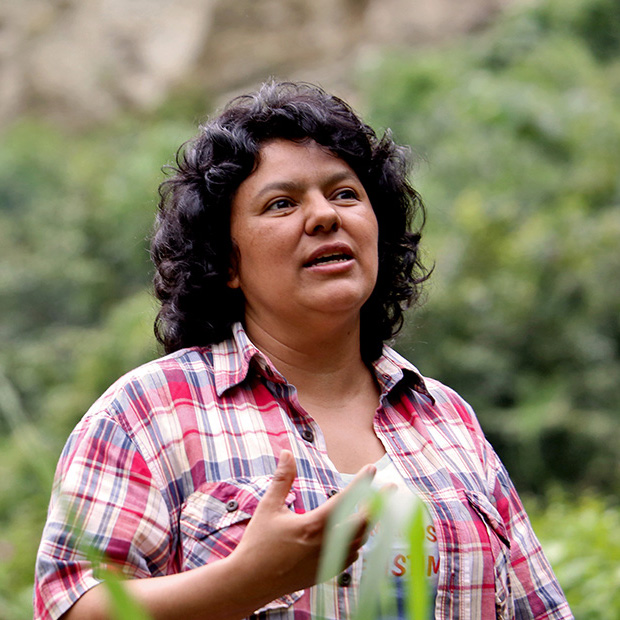
Río Blanco, Honduras
Goldman Prize Winner 2015
The Gualcarque River is imbued with ancestral and spiritual importance for the Lenca people of Honduras. It supports and sustains the lives of communities in the Río Blanco area and is believed to be inhabited by female spirits that watch over and protect the universe. “I believe the river signifies life,” Berta Cáceres explained. Cáceres co-founded the National Council of Popular and Indigenous Organizations of Honduras (COPINH) in 1993, to support indigenous peoples organizing for civil and international rights. After a military coup in 2009, the Honduran government approved construction of 47 dams across the country, and China-based Sinohydro––the world’s largest developer of dams––and the Honduran company Desarrollos Energéticos SA (DESA), signed an agreement to build the Agua Zarca dam on the sacred Gualcarque River.
Berta Cáceres led the Lenca resistance against the proposed dam, which directly violated the Lenca’s rights as indigenous people, threatened their livelihoods, and jeopardized the revered Gualcarque River. Cáceres withstood harassment, attacks and death threats throughout the years-long battle to stop the dam. Lenca community leader Tomas Garcia was shot and killed by the Honduran military during a peaceful protest in 2013. Cáceres and the Río Blanco community forced Sinohydro to pull out of the agreement to build the dam. It was a victory for the Lenca people.
“I could feel what the river was telling me,” Cáceres said. “I knew it was going to be difficult. But I also knew we were going to triumph, because the river told me so.”
On March 3, 2016, after years of being targeted by the Honduran government and military for her environmental activism, Berta Cáceres was shot and killed in her home in La Esperanza. Her murder sparked international outrage and Cáceres’s death has become a symbol of the dangers faced by environmental protectors around the world. Eight of the nine men accused of plotting Berta’s murder were tried and seven were convicted and sentenced to between 30 and 50 years in prison. One of the accused was acquitted and the other—the alleged mastermind—is in prison awaiting trial. He’s the president of DESA, the hydroelectric company Berta opposed. Berta’s three daughters picked up where their mother left off in the fight for indigenous rights and the protection of sacred places. Bertita and Laura Zuniga now manage COPIHN and Olivia Zuniga became the first indigenous woman member of congress from her state.
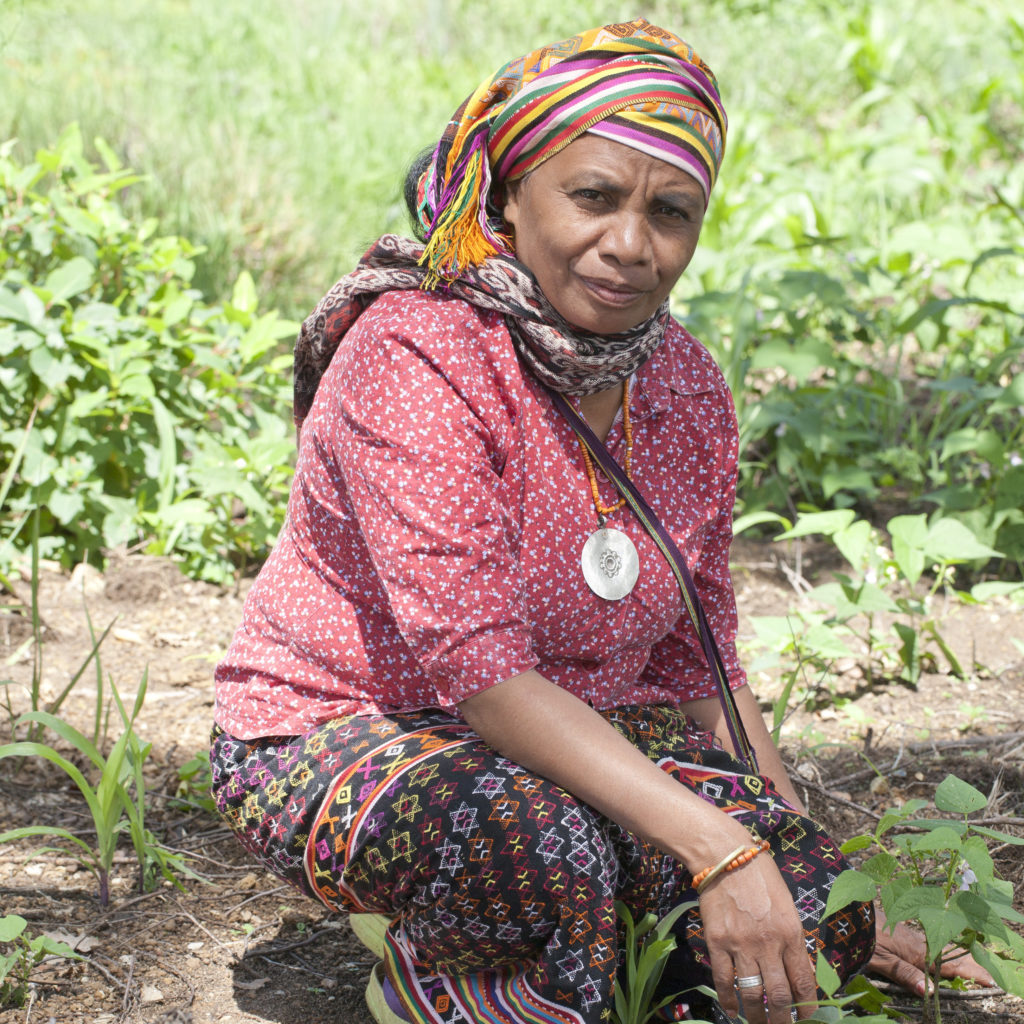
West Timor, Indonesia
Goldman Prize Winner 2013
In West Timor, Indonesia, Aleta Baun met with elders from 24 villages and mobilized hundreds of women to peacefully protest the Indonesian government’s permitting of marble mines, which were destroying the sacred forests in the mountains of her homeland.
“The philosophy of our people is that we regard the Earth as the human body,” Baun said. “That stone is our bone. Water is our blood. Land is our flesh, and forest is our hair. If one of them is taken away, we are paralyzed.”
For nearly a year, the women surrounded the mountains with their looms, weaving bright textiles as a symbol and reminder that without nature, all people would lack resources they depend upon to survive, and to highlight the importance of respecting the life-giving elements of the natural world.
Miners eventually abandoned the marble extraction operation, but Baun faced death threats and had to go into hiding to protect herself and her family. She was honored with the Goldman Environmental Prize in 2013 for her efforts to teach the importance of respecting nature by bringing her community together to protect their sacred mountains.
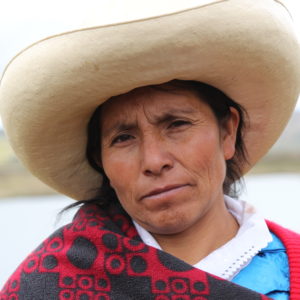
Cajamarca, Peru
Goldman Prize Winner 2015
In 1994, the Colorado-based Newmont mining company opened the Yanacocha mine, the largest open-pit mine in Latin America, near Máxima Acuña’s home in Cajamarca, Peru. During the decades in which the mine has been in operation, it has drained nearby lakes and poisoned freshwater sources––which people in Cajamarca depend on to survive––with cadmium, lead and arsenic.
In 2010, Newmont proposed a new mining project to extract gold and copper from the mountain plateaus surrounding Acuñas home. The company planned to drain four lakes in the area including Laguna Azul, which provides water for Acuña’s family and many others. Newmont asked Acuña to sell her land to the mine, and when she refused the company moved to forcibly evict her and her husband, despite their rightful ownership of the property. The police and Newmont’s security forces attacked Acuña and her daughter, leaving them unconscious, and then accused Acuña of illegally squatting on her own land.
Acuña and her husband were fined roughly $2,000 and sent to prison for nearly 3 years, but Acuña appealed the court’s decision and turned to organizing community support against the mine. The community formed a group called “Guardians of the Lakes” and camped out on Acuñas land to protect her and to defend Laguna Azul. Two years later, the courts finally ruled in her favor and overturned the eviction, but police responded by surrounding Acuña’s property and antagonizing Acuña and her family, day after day.
Maxima Acuña sued Colorado-based Newmont Corporation in US federal court. The court ruled that the case must be considered in Peru. Acuña remains steadfast. “I will never kneel before Yanacocha—and I am never going to give up.”
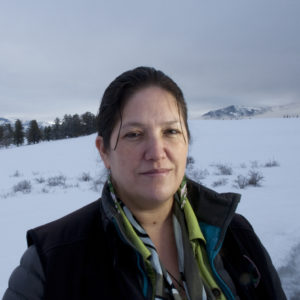
British Columbia, Canada
Goldman Prize Winner 2015
Fish Lake lies at the heart of the Nemiah Valley, the traditional homeland of the Tsilhqot’in First Nations people. Grizzly bears feed on the wild salmon that flourish in the pristine, glacial waters of Fish Lake.
Marilyn Baptiste is the former chief of the Xeni Gwet’in First Nation. In 2008, Taseko Mines Limited (TML) proposed to build Prosperity Mine, a 3 kilometer-wide, open-pit gold and copper mine. The company planned to drain Fish Lake and use the area to store mineral stockpiles, which would have destroyed the entire area. The provincial government of British Columbia approved the mine before the federal government had started its environmental review of the proposed project.
Baptiste led the Xeni Gwet’in and Tsilhqot’in people in coordinating protests and mounting legal challenges against the mine. She worked with tribal chiefs, elders and scientists and incorporated their perspectives regarding the environmental and cultural importance of the land around Fish Lake into the Canadian Environmental Assessment Agency’s (CEAA) review of the mine.
The federal government rejected the Prosperity Mine once the CEAA report came out, but TML revised their proposal, and when the company started moving in to develop the area around Fish Lake, Marilyn Baptiste blocked the road by herself, fearlessly facing down TML workers who threatened to run her down. The Canadian federal government rejected the mine once again. According to Baptiste, the government’s decision is “very significant to all indigenous peoples around the world. It means that governments, the courts and industry can no longer deny our aboriginal rights to practice our culture.”
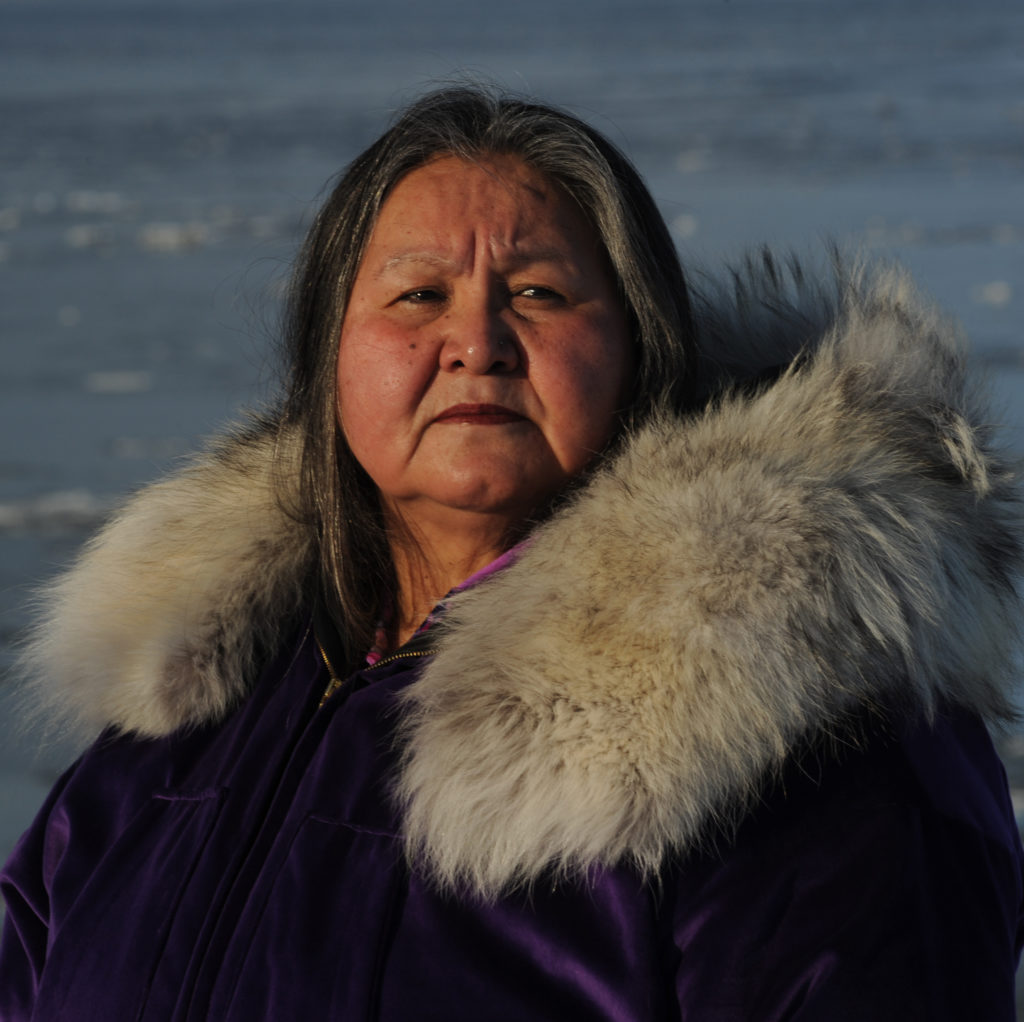
Point Hope, Alaska
Goldman Prize Winner 2012
The Inupiat people live 200 miles north of the Arctic Circle and depend on marine life for sustenance and survival. The Inupiat thrive in harsh weather and unpredictable conditions and have maintained many traditional cultural practices, such as the use of wood-frame, seal-skin boats for their annual bowhead whale hunts.
Caroline Cannon is a community leader who was chosen by village elders to defend the Inupiat against offshore oil and gas drilling, which threatens all who depend upon the ocean and its marine resources to live. In a region where the sea is frozen solid for almost half of the year, there is no realistic response plan to a likely future oil spill, and the impacts that such a spill would have on the region’s biodiversity––and on the Inupiat people’s lives and livelihoods––are massive and deadly.
Cannon visited government officials in Alaska and Washington DC to educate them about life in the Arctic and the importance of protecting the oceans and wildlife resources that the Inupiat people depend upon. In 2009, largely due to Cannon’s hard work, a federal court halted future oil and gas lease sales in the Arctic. Cannon continues to fight against existing oil drilling projects off the coast of Alaska.
“I am who I am because of the elders,” Cannon explained. “They say, ‘You are my voice. You need to protect our way of life.’ I know that when you follow what’s been instilled in you, you can’t go wrong.”
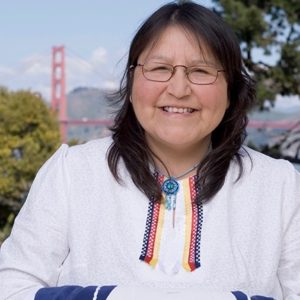
Manitoba, Canada
Goldman Prize Winner 2007
Poplar River First Nation is an indigenous community of 1,200 Ojibway people in a remote region on the eastern side of Lake Winnipeg in Manitoba, Canada.
Sophia Rabliauskas is a leader of the Poplar River community and was instrumental in organizing youth and elders who together secured protection for nearly two million acres of vitally important and undisturbed boreal forests of their homeland. “Everything that we do is about the land,” she says. “We are part of the that land. If we lose the land, we won’t survive as a people. This is our traditional territory.”
As long as the Poplar River region is under Manitoba government jurisdiction, the boreal forests––which store large amounts of carbon and are important in mitigating the effects of climate change––are threatened by dams, timber and mining operations which would destroy biodiversity and release massive amounts of carbon dioxide into the atmosphere.
Rabliauskas and the Poplar River First Nation spent a decade combining their traditional indigenous knowledge with technical scientific research to create a comprehensive land management plan and to secure permanent protection of their territory. Rabliauskas sought to ensure that the Poplar River First Nation, with their rich cultural history and connection to the land, would guide the process of determining how their homeland will be used in the future and will continue to act as the land’s traditional stewards. “We have the responsibility to take care of the land,” Rabliauskas said. “It really depends on our survival. We are the land.”

Ene River Valley, Peru
Goldman Prize Winner 2014
The Asháninka are one of the largest indigenous groups in South America, with traditional homelands that stretch from northwest Brazil to the Peruvian Andes. They depend upon the intact rainforests of the Ene River Valley for survival.
“This place is sacred to us, culturally, as Asháninka,” says Ruth Buendía, President of the Asháninka Center of the Ene River (CARE). “We have creation routes here. This is the place where all indigenous Amazon people first appeared.”
In 2010, the governments of Brazil and Peru signed an energy agreement and approved construction of a series of hydroelectric dams in the Amazon without consulting local indigenous communities. One of the five proposed dams would have flooded the Pakitzapango Canyon, displacing more than 7,000 Asháninka people and destroying the vitally important rainforest ecosystem. Along with CARE, Ruth Buendía visited every community in the Ene River Valley, educating people about the threats posed by the hydroelectric dams. She protested the government’s violation of the Asháninka’s rights to free, prior, and informed consent, and united a region-wide assembly of Asháninka people to fight against the Pakitzapango Dam and to stop the government from displacing them from their homeland.
Buendía’s efforts were successful. The Pakitzapango Dam was stopped, and the Asháninka’s rights were recognized. Buendía continued to advocate for indigenous peoples in Peru and her work was instrumental in stopping a second dam, the Tambo 40, as well. She has also worked with CARE to establish sustainable agriculture projects and help Asháninka communities remain connected to their traditional lands.
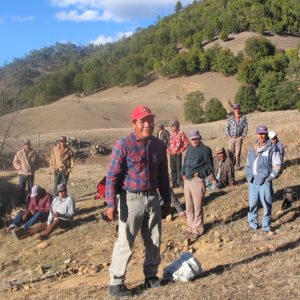
Sierra Madre Mountains, Mexico
Goldman Prize Winner 2005
The Tarahumara people are native to the Sierra Madre mountain region of northwest Mexico, where both the indigenous people and the old growth, virgin pine forests they have protected for hundreds of years are at risk. The Tarahumara have been struggling for their land rights since the 1930s, fighting against the drug trade that runs through the region, which is fueled by money from illegal logging. This deadly combination has destroyed 99 percent of old-growth forests in the Sierra Madre.
Isidro Baldenegro López was a leader in protecting the forests and the rights of the Tarahumara people against unsound logging practices and local crime bosses. “We think of the forest as a filter that purifies our air,” he said. “It maintains humidity and it provides us with clean water and a healthy environment.”
López mobilized the Tarahumara people against the logging of community-owned parcels of forest. In 2002, he organized a Tarahumara delegation to travel to the Federal Forestry Agency in the city of Chihuahua. Together, they took over a government building and within 24 hours had reached an agreement with government officials outlawing the logging. But López was arrested without a warrant soon after, falsely accused of drug and weapons possession. He was jailed. The charges were eventually dropped due to international pressure and López continued to work for environmental justice and the rights of the Tarahumara people.
In January 2017, Isidro Baldenegro López was shot and killed in Chihuahua, Mexico.
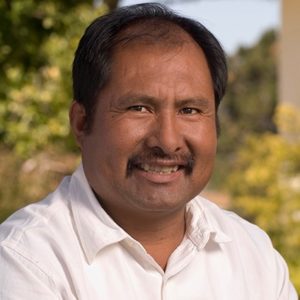
Oaxaca, Mexico
Goldman Prize Winner 2008
During the Spanish colonization of Mexico, conquistadors deforested the Mixteca Alta area in the Oaxaca region, and exploited the Mixtec people’s indigenous territory for livestock grazing. This caused devastating erosion throughout the region, where Mixtec farmers have grown native corn from ancient seed stock for thousands of years. Up to five meters of topsoil have been lost due to erosion in the last 500 years.
“We always dreampt that the Mixteca Alta would be green again,” said Jesús León Santos, cofounder of the Center for Integral Small Farmer Development in the Mixteca (CEDICAM), an organization aimed at promoting sustainable agriculture and helping Mixtec community members reforest the region and decrease erosion. “It’s not possible for a people with so much history and a vast cultural richness to continue to live in such dire poverty and adverse environmental conditions.”
Led by Santos, CEDICAM helped community members establish greenhouses and start native seed-saving programs to promote agro-ecological practices and plant biodiversity. They are transforming pre-Hispanic terraces back into planting fields, replanting trees and building contour ditches to capture rainwater, promote water retention and prevent soil erosion.
Mexican corn prices plummeted with the passage of the North American Free Trade Act (NAFTA) in 1994, and many indigenous peoples from Oaxaca were forced to emigrate to the United States to pursue work. CEDICAM hoped to improve conditions in Oaxaca in order to provide initiatives for local indigenous people to return to their traditional homelands. Within Mixteca communities, natural resources “still belong to everyone,” Santos says. “I think this is a very good concept for humanity today. Where there is community wealth and we value everything that exists among all of us.”
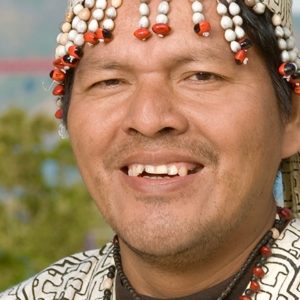
Madre de Dios, Peru
Goldman Prize Winner 2007
Uncontacted, isolated indigenous groups in the remote Peruvian Amazon are extremely vulnerable to threats posed by governments and corporations vying for oil, gold and big-leaf mahogany trees in their homelands.
“They are taking the very blood out of the land,” says Julio Cusurichi Palacios. “They are leaving the land naked. We are fighting to make sure that we at least have forests, and that those forests provide for us, for the animals, and for all of us that live here on the planet.” Palacios is a Shipibo indigenous leader from the Peruvian Amazon, who was an adviser to the Federation of Natives of the Madre de Dios River and its Tributaries (FENAMAD), an organization fighting to protect rainforest biodiversity in the Amazon and to defend indigenous territories and indigenous groups living in voluntary isolation there.
Palacios worked to protect the rainforest by encouraging small-scale loggers to adopt sustainable practices and to prevent illegal loggers from Brazil from entering Peru. He sat down with indigenous leaders in the Madre de Dios region to help communicate their perspectives to local loggers and was instrumental in forming coalitions between indigenous peoples and small-scale loggers built upon a shared understanding of their mutual dependence on the rainforest to survive.
After the Peruvian government stopped staffing posts that Palacios had helped establish in order to report the entrance of illegal loggers and to document illegal mahogany exports in the Amazon, Palacios trained local indigenous people to monitor the rivers and report their findings to the government. He has also worked to stop illegal US imports of mahogany from Peru, and has pressured the Peruvian government to protect isolated indigenous peoples living in the Amazon.
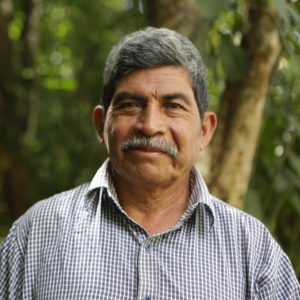
Agua Caliente, Guatemala
Goldman Prize Winner 2017
The Q’eqchi are indigenous to the land surrounding Lake Izabel, the largest lake in Guatemala, and they depend on the land and water for farming and fishing. In the 1960s, when nickel deposits were discovered on Q’eqchi land, the Guatemalan government granted licenses to international companies that established mines and poisoned the water and farmlands of the Q’eqchi people. Lake Izabel was soon the most polluted lake in Guatemala. When nickel mining companies returned to the Agua Caliente region in 2006 and security forces began evicting indigenous families living in the mountains above Lake Izabel, Rodrigo Tot mobilized to defend his people’s rights and to protect their homeland. “We have always called the land Mother Earth,” Tot said. “Without the land, we wouldn’t be able to live.”
Tot began documenting Q’eqchi people’s traditional and cultural ties to their homelands, and worked to register local indigenous peoples’ land ownership after the Guatemalan government destroyed the records proving their rightful ownership of the land. He worked with national and international NGOs to secure Q’eqchi land rights and to resist the Guatemalan government’s violations of the rights of indigenous people. In 2011, the Guatemalan Constitutional Court ordered the Guatemalan government to restore the pages that had been destroyed from the land registry, and to issue land titles back to the Q’eqchi people who the court found to be the rightful owners of territory into which the nickel mine was illegally attempting to expand.
The court’s decision was a huge victory for the small Q’eqchi community, and when the mining company and the Guatemalan government continued to ignore the court’s ruling, Tot brought the case for indigenous land rights to the Inter-American Commission on Human Rights, arguing that the Guatemalan government’s promotion of mining willfully violated indigenous peoples’ land ownership.
In 2012, Tot’s eldest son was murdered during a staged robbery, which Tot believes was intended to scare him and end his activism. “I lost my son for this struggle,” Tot said. “I am sad, because my family is no longer complete. But I will continue this fight.”
Blog Post Categories: Blog, SLFP News, Success Stories